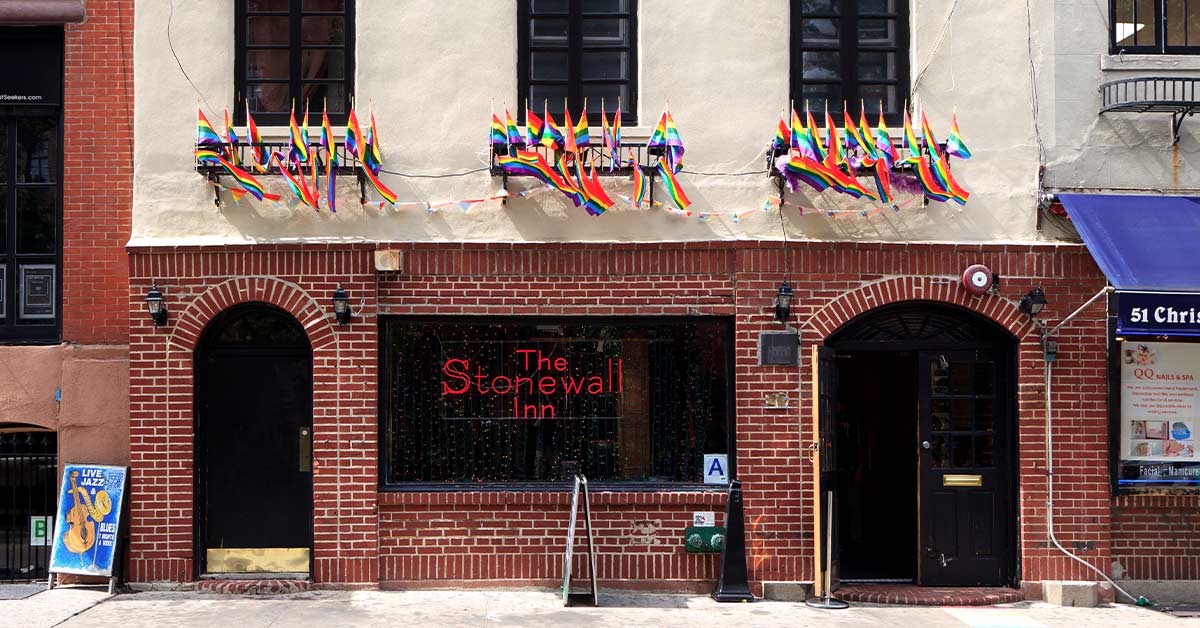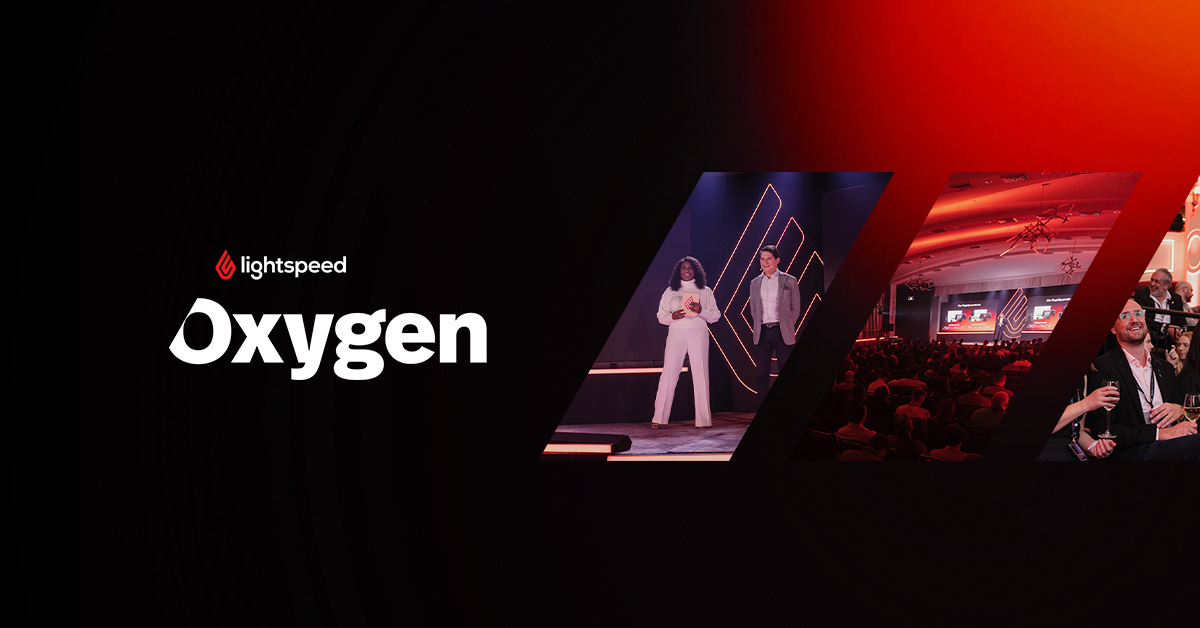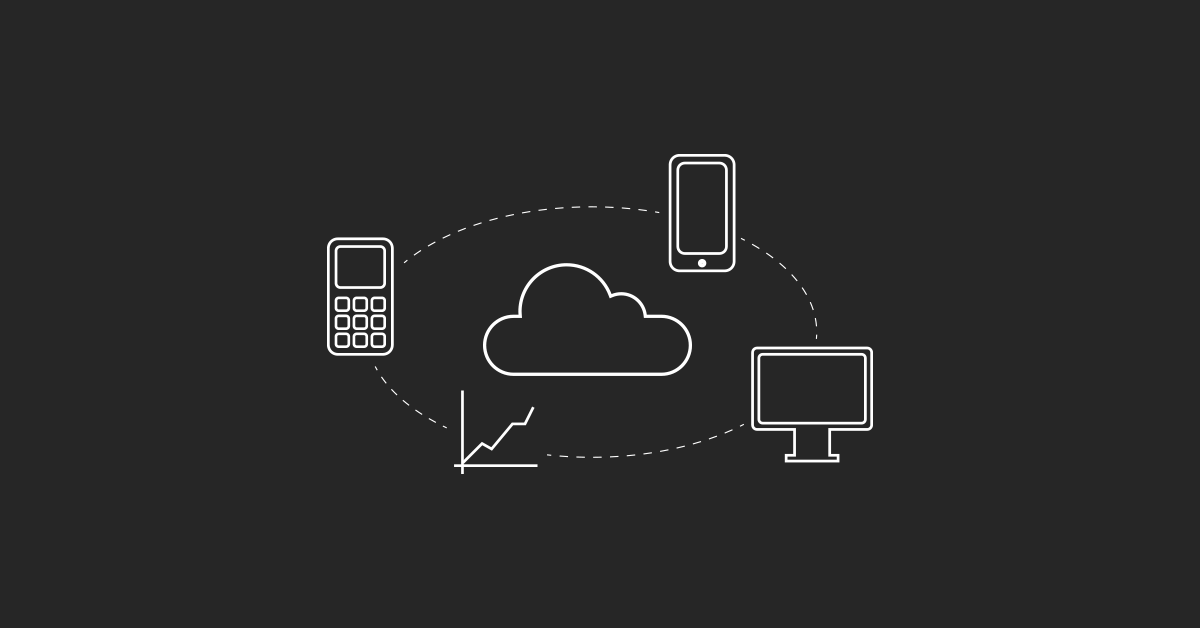
Supporting Pride is part of our culture here at Lightspeed. Our CEO, Dax Dasilva, is openly gay and founded this company in Montreal’s gay village. The first four Lightspeed employees were members of the LGBT+ community. Today, nearly 20% of Lightspeed’s employees identify as lesbian, gay, bisexual, transgender, queer or asexual.
“Today, nearly 20% of Lightspeed’s employees identify as lesbian, gay, bisexual, transgender, queer or asexual.”
As a celebration of the progress that the LGBT+ community has made, we invite you to join us as we explore key moments in the fight for equality and awareness that helped pave the way for our Lightspeed community, LGBT businesses and the LGBT+ community across Canada and the United States.
1962: the Tavern Guild, the gay business association in the United States, is founded
In 1962, a group of gay bar owners and liquor wholesalers in San Francisco, California, came together with a mutual goal: to protect the interests of their businesses and community. They formed the Tavern Guild of San Francisco, the United States’ first gay business association.
Operating a business while openly gay and serving the gay community was not easy in the 1960s. Many bar owners were subject to police raids and increased scrutiny by the California Department of Alcoholic Beverage Control. Because the law wasn’t favorable for the community across the country, it wasn’t uncommon for gay bars in other states—such as the famous Stonewall in New York—to be owned by the mafia. The Tavern Guild gave gay businesses in San Francisco another option, and their unified front helped them navigate legal and social challenges together.
To protect their community, the Tavern Guild had a number of initiatives:
- Weekly meetings: members met every week to discuss their needs so that they were making the best decisions for their community, including promoting safe business practices and finding ways to increase patronage at bars.
- Price fixing: fixed drink prices across gay bars in the association helped ensure unity between members.
- Police raid warning system: the Tavern Guild operated a phone network that tracked police raids to protect gay bars and their patrons.
- Unemployment community funds: Tavern Guild members who were unemployed thanks to police raids could receive funds from the association to help keep them on their feet.
- Fundraisers and charity events: in addition to protecting and unifying the community, the association eventually grew large enough to start hosting events to fundraise for causes and politicians promoting LGBT+ rights. These events held considerable political sway and even branched out to help raise funds for groups outside of the LGBT+ community, notably the civil rights movement.
The Tavern Guild came to an end in 1995. While the reasons why the Tavern Guild ended—including gentrification and the impact of the AIDS crisis—highlighted that even in the 1990s, there were still battles to be fought for the LGBT+ community, the Tavern Guild had proven itself to be an influential and invaluable part of modern LGBT+ history in the United States. By then, numerous gay business associations had been started in other cities, the Stonewall riots had woken the general public up to the need for legal LGBT+ protections and many of the anti-gay statutes that the association had spoke out against were no longer on the books.
1969: the Stonewall Inn is raided, leading to days of riots and a turning tide in LGBT+ rights
On June 28th, 1969, New York City police raided the Stonewall Inn. It wasn’t the first raid on gay bars and sadly would not be the last, but the fallout of the event broke through into the public consciousness and led to the establishment of Pride when participants commemorated the events the next year and every year after.
In 1966, regulations penalizing the sale of alcohol to the LGBT+ community in New York were overturned, but things weren’t much better for the community by 1969—same-sex activity, such as holding hands or dancing together, was still illegal. Police harassment was rampant.
Stonewall Inn allowed dancing and welcomed drag queens. This meant its operations violated unjust regulations about gay conduct and gender-appropriate clothing, no doubt a factor in the police obtaining a warrant for their raid. Patrons, fed up with this treatment, didn’t take the harassment well. Six days of protests followed, spilling out from the Stonewall Inn and into the neighboring streets and park.
The local BIPOC LGBT+ community was integral to the protests and the momentum that followed.
Black lesbian activist Stormé DeLarverie was crucial in galvanizing the community into acting the night of the raid. Arrested for her masculine dress, Stormé fought with the police as they cuffed her, repeatedly escaping. After being hit on the head with a police baton, she shouted at the crowd to do something—and they responded, fighting back against the harassment and taking a stand that would snowball into a louder demand for equal treatment in the days to come.
Marsha P. Johnson arrived on scene shortly afterward, and she was present for the following protests, at one point dropping a bag of bricks on a police car. A prominent Black self-identified transvestite and drag queen—the term transgender was not common during this time, though Marsha used she/her pronouns—Marsha went on to be a force in the fight for LGBT+ rights, including founding the Street Transvestite Action Revolutionaries (commonly known as STAR), which offered housing to LGBT+ youth.
Sylvia Rivera was a close friend of Marsha and a prominent Latina LGBT+ rights activist and drag queen—Sylvia at times identified as a gay man, a gay woman and a drag queen, with an ultimately fluid gender identity. After participating in the Stonewall protests, she went on to help found STAR with Marsha and fight against unjust laws penalizing the LGBT+ community. However, poor treatment of trans activists led to her exit from gay activism for 20 years, returning to the fight in the 1990s until her death in 2002.
Black trans woman Miss Major—one of the few prominent names of Stonewall still alive as of 2020—was meeting with a girlfriend at the Stonewall Inn on June 28th, and was a leader in the protests. Miss Major served a 5 year sentence for burglary after Stonewall, during which she gained a new appreciation for the power of activism. She went on to be a powerful voice in the fight for trans and intersex rights, including working as Executive Director of the Transgender Gender-Variant & Intersex Justice Project.
These individuals helped set the tone for the fight for LGBT+ rights after Stonewall. It’s thanks to their tireless work—and the work of the countless other activists at their side—that the Stonewall protests turned into a larger movement that couldn’t be ignored.
1970s: protests for LGBT+ rights take place across Canada, including the country’s first gay rights march
In 1965, Pine Point RCMP were investigating an arson case. They questioned a local mechanic, Everett George Klippert—and though he had nothing to do with the arson, he voluntarily disclosed that he’d had relations with four men. Though all of these acts were consensual, private and amongst adults, he was charged with four counts of indecency. A crown-appointed psychiatrist determined Klippert’s homosexuality was “incurable,” a diagnosis that meant Klippert was considered a dangerous sexual offender in Canada at this time. Klippert’s prison sentence was to be indefinite. The Court of Appeal in the Northwest Territories and the Supreme Court of Canada both dismissed his appeal, and Klippert remained in jail.
Tommy Douglas, leader of the NDP, pressured the Liberal government on the legal status of homosexuality in Canada, referencing in part Klippert’s case. Minister of Justice Pierre Trudeau presented the Criminal Law Amendment Act in response, which led to the decriminalization of homosexuality across Canada—but not the full legalization.
Decriminalization was only the first step; there was still a long way to go. Klippert himself remained imprisoned until 1971, while others who had been charged with indecency for homosexual acts were still in jail years after he was released. Homosexualty was considered a disorder, and the LGBT+ community still faced heavy discrimination legally and socially—the bill simply meant men over 21 could no longer be jailed for consensual acts done in private.
In August of 1971, these continuing tensions bubbled over into Canada’s first gay rights march. A group of 100 people gathered at Parliament Hill with a list of 10 demands and for the government to end state discrimination against the community. A smaller protest took place in Vancouver at the same time.
In 1973, the year homosexuality was removed from the Diagnostics and Statistics Manual of mental disorders, Canada saw its first truly national Pride week. In cities across the country—including Vancouver, Saskatoon, Winnipeg, Toronto, Ottawa and Montreal—the LGBT+ community came together for arts festivals, picnics and rallies for gay rights.
Then, in 1974, Adrienne Potts, Pay Murphy, Sue Wells, and Heather Elizabeth, four lesbians who later became known as the Brunswick Four, were arrested at the Brunswick House Tavern in Toronto. They were brutalized by police while in custody, and the subsequent trial was, according to the women, a sham and miscarriage of justice. Toronto’s LGBT+ community had long suffered at the hands of Toronto police, and they rallied around the Brunswick Four, setting up a legal defense fund to support them. The LGBT+ community’s outrage—and the horrific treatment of the four by the police—reached the general public, with many in Canada tuning in to the cause for the first time.
The growing momentum behind the LGBT+ rights movement meant that when two gay establishments were raided in Montreal in 1977, 2,000 people showed up to protest the unjust treatment. The anger of the protesters was heard, and Quebec became the second jurisdiction in the world to ban discrimination on the basis of sexual orientation.
1977: the Toronto Lambda Business Council, Canada’s first gay business association, is founded
In 1977, Canada saw its first gay business association: the Toronto Lambda Business Council, named for the lambda, one of the original modern gay pride symbols. The association grew in strength thanks in part to the work of George Hislop, one of Canada’s first openly gay political candidates; by 1980, around 80 businesses were members.
We don’t have as much documentation on the Toronto Lambda Business Council as we do the Tavern Guild, but we do know Canada’s first gay business association was an important force in Toronto. In 1979, it launched a “Buy Gay” campaign, where members of the LGBT+ community were encouraged to support LGBT+-owned businesses for everything from shopping for clothes to hiring essential services.
Hislop, an activist and gay business owner, ran for political office in 1980, looking to occupy a seat on the Toronto city council. Though he was never elected, his political and commercial activity helped strengthen the position of the gay business community and LGBT+ community at large in Canada, from encouraging community members to support small gay businesses to being a part of a landmark case ensuring Canada Pension Plan rights to LGBT+ widows and widowers.
2000s: equal marriage laws and growing social equality
The 21st century was marked by more social awareness of the LGBT+ community than ever before. Where once the Tavern Guild and the Toronto Lambda Business Association stood as their country’s first and only gay business association, the turn of the century saw countless local and regional groups catering to and advancing the interests of LGBT+ small and medium businesses. There was more legal and social recognition than ever before, though the AIDS crisis had revealed one crucial weak spot in laws and regulations: same-gender couples had no equal marriage rights, putting partners at a devastating disadvantage if one were to fall ill or pass away.
In the 2000s, the tireless work of countless LGBT+ activists and groups began to see action. In Canada, Ontario fully legally recognized equal marriage for same-gender couples in 2003. British Columbia followed shortly in the same year, and nearly every province legalized equal marriage after. In 2005, Canada passed Bill C-38, legalizing same-gender marriage across the country. Though the Conservatives threatened to challenge the law, the motion to reopen the debate they tabled in 2006 was defeated.
Canada’s marriage laws meant that couples from outside of the country could get married within it. In 2007, two American women, Edith Windsor and Thea Spyer, traveled to Canada to do exactly that. Though equal marriage laws were on the books in a handful of states—Massachusetts became the first state to legalize gay marriage in 2004—their home state of New York had yet to pass an equal marriage act.
Thea Spyer passed away in 2009. Windsor was her sole heir, but she was denied the unlimited spousal tax exemption from federal state taxes that was afforded to heterosexual married couples. New York’s governor had issued an executive direction for state agencies to recognize same-gender marriages that had been performed elsewhere in 2008, but at a federal level, marriage was still defined by the Defense of Marriage Act as being between a man and a woman. Windsor sued, claiming the federal law singled out gay couples for differential treatment. The Supreme Court agreed in 2013; it overturned the law in a 5-4 ruling.
Though this did not yet mean legalized gay marriage across the country, it did mean 13 states and the District of Columbia recognized equal marriage rights—including New York. Successive legal challenges carried the momentum forward and led to equal marriage being declared a legal right across the United States in 2015. The LGBT+ community had achieved full legal marriage protection in both Canada and the United States, thanks in part to a case involving both countries.
Pride and the journey ahead
We are stronger when we stand together, a fact we can see demonstrated well when we look to the LGBT+ associations and activists who have led tremendous change in their communities. Pride, beginning with the first annual commemoration of Stonewall, is a celebration of resilience.
Pride in 2020 looks a little different than previous years, though. Pride celebrations around the world, including our home city’s own Fierte MTL, have canceled their marches and gone virtual for the safety of their communities.
This is a year where supporting each other is more important than ever. As such, Lightspeed is honoring pride by making donations to three organizations around the world to help amplify and support the interests of LGBT+ business owners: Canada’s LGBT+ Chamber of Commerce, East meets West and GLOBE.

News you care about. Tips you can use.
Everything your business needs to grow, delivered straight to your inbox.


